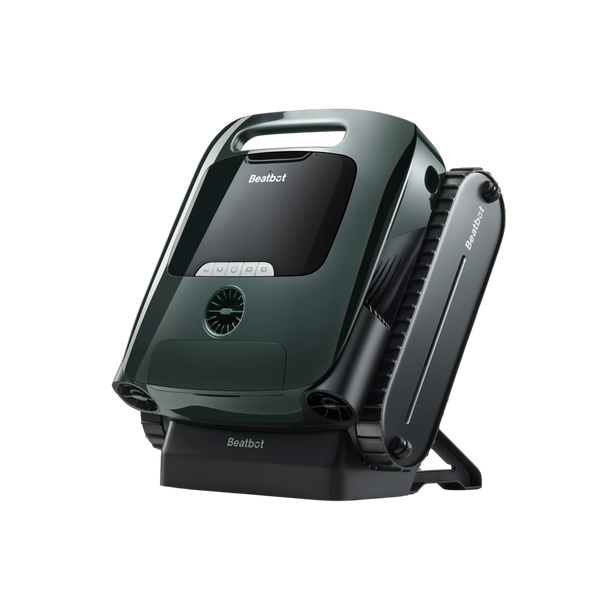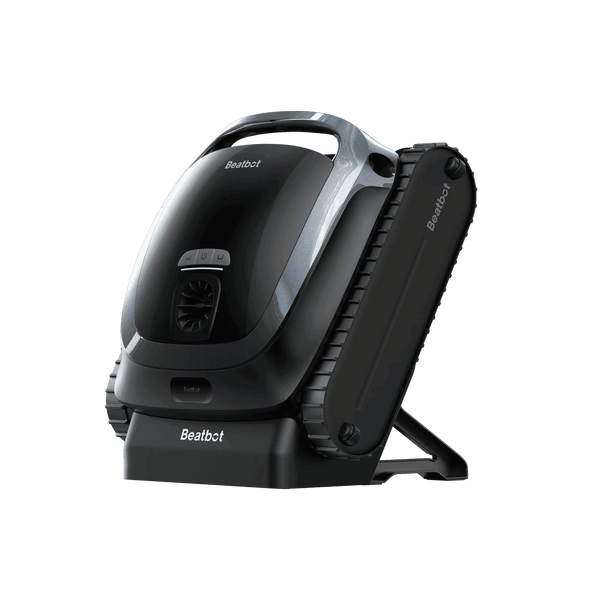Cleaning Your Swimming Pool Filter: Step-by-Step Techniques
A pool filter is crucial for maintaining the cleanliness and proper functioning of a swimming pool. It acts as the kidney of the pool by ensuring that it remains free of debris, algae, and bacteria together with the efforts of all kinds of other pool cleaners , pool vacuums eg.. However, it also requires time and attention for cleaning. In this article, we will guide you through everything you need to know about cleaning your pool filter.
Table of content

When to Clean a Pool Filter
Maintaining your pool filter is crucial for clear and safe water. Here are some indicators that it may be time to clean your pool filter:
Rise in Filter Pressure
- Anytime the filter pressure reading increases by 8-10 psi above your normal reading, it's a sign that the filter needs cleaning. This normal reading should be recorded when you first install the pool filter.
- A high pressure reading suggests that the water is not flowing through the filter efficiently, indicating that the filter is likely dirty.
Old or Damaged Filters
- Old or worn filters may need to be replaced rather than just cleaned. Signs of damage include flattened or frayed pleats, cracked end caps, or a cracked pressure gauge.
- If you notice any of these issues, it's best to replace the filters to ensure optimal performance and safety of your pool water.
Cloudy Water
- If the water in your pool appears cloudy, it could also be a sign that the filter needs cleaning. Cloudy water often indicates that the filter is not effectively removing contaminants from the water.
Here are some general guidelines for maintaining different types of pool filters:
Sand Pool Filters :
- Regular maintenance involves backwashing the filter every 1-4 weeks to remove trapped debris and maintain efficient water flow.
- Additionally, thorough cleaning should be performed once a year to ensure optimal performance and extend the lifespan of the filter.
Cartridge Pool Filters :
- These filters require more frequent cleaning, with a recommended cleaning schedule of every 2-6 weeks.
- A deep cleaning, which involves removing and soaking the cartridge in a cleaning solution, should be done once a year to thoroughly remove any built-up contaminants.
DE (Diatomaceous Earth) Pool Filters:
- For DE filters, backwashing is necessary every 1-3 months to keep the filter media from clogging.
- However, a more thorough maintenance routine involves dismantling the filter and performing a deep clean twice a year to ensure that the filter media remains effective and the filter operates smoothly.
When you are sure that your pool filter needs cleaning, you can follow these steps to maintain it, regardless of whether it is a cartridge filter system, a sand filter, or a D.E. filter.
How to Clean a Cartridge Pool Filter
Cleaning a cartridge pool filter is a straightforward process, but it requires attention to detail to ensure it's done correctly. Here's a step-by-step guide:
1、Preparation
- Begin by turning off the pool pump at the breaker to avoid any accidents.
- Next, slowly open the air-relief valve (typically located on top of the filter) to remove any excess air from the system.
2、Disassembly
- Refer to your owner's manual for specific instructions on how to remove the clamp or assembly holding the filter together.
- Carefully remove the top of the filter and then gently take out the cartridges. Inspect them for any signs of damage or wear, such as cracks, tears, or mushiness, which indicate that they need to be replaced.
3、Cleaning
- Use a spray nozzle on your garden hose to clean the cartridges. Spray at an angle to get between the pleats, ensuring that you don't use a pressure washer, as it could damage the cartridges.
- If the cartridges are heavily soiled, apply a filter cleaner according to the manufacturer's instructions.
- For extremely dirty cartridges, soak them in a mixture of filter cleaner and water overnight in a five-gallon bucket or clean plastic trash can, ensuring they are completely submerged.
4、Reassembly
- Once the cartridges are clean, place them back into the filter and secure them in place.
- Replace the filter top and tighten the clamp or assembly to ensure a proper seal.
5、O-ring Inspection and Lubrication
- Check the O-ring on the filter tank for any signs of wear or damage. If it's in good condition, lightly apply some lubricant to keep it flexible. If it's dry-rotted, deformed, stretched, or worn out, replace it to prevent leaks.
- It's a good practice to replace the tank O-ring during each cleaning, as wear and tear are common.
6、Restarting the System
- With the air relief valve still open, turn the system back on to release any remaining air from the filter tank.
- Keep the valve open until a steady stream of water sprays from it, then close it to resume normal filtration.
How to Clean a Sand Pool Filter
Cleaning a sand pool filter is easy aswell. Here are the steps you need to follow:

Backwashing the Filter
- Whenever the filter pressure rises by 8-10 PSI above the normal operating level or the pool water becomes cloudy, you should backwash the filter to remove trapped dirt and debris.
Chemical Cleaning
- At least twice a year, you should perform a deeper clean by using a chemical cleaner specifically designed for sand filters.
- Start by backwashing the filter to loosen and remove any dirt and debris.
- Slowly add the sand filter cleaner into the skimmer.
- Backwash the filter again for 3 to 5 minutes to ensure that all dirt and debris dislodged by the cleaner are removed.
Finishing Up
- Once the cleaning process is complete, turn off the filter pump.
- Move the backwash valve handle to the “Filter” position.
- Turn the filter pump back on to resume normal filtration.
Considering Sand Replacement
- If you continue to experience water quality issues after chemical cleaning or if backwashing does not lower the PSI, it may be time to replace the sand in your filter. This is because over time, the sand can become worn and less effective at filtering contaminants.
Step-by-Step Guide for Cleaning a D.E. Filter

Backwashing the Filter :
- Operate the filter in backwash mode for 3-5 minutes to clear out debris and impurities.
Turning Off the Pump:
- After backwashing, turn off the pump and switch it back to its normal filter mode.
Drain the Filter Tank:
- Open the air relief valve to release any trapped air.
- Remove the drain plug to allow water to drain from the filter tank.
Disassemble the Filter:
- Refer to your owner’s manual for specific instructions on how to remove the clamps that hold the filter together.
- Carefully remove the top half of the filter tank.
Clean the Filter Tank:
- Rinse the interior of the tank thoroughly with a garden hose.
- Close the drain plug once the tank is clean.
Clean the Manifold and Grids:
- Use the spray nozzle on your hose to clean the manifold and grids, ensuring all debris and used D.E. are removed.
- If the manifold and grids are heavily soiled, use a D.E. filter cleaner according to the manufacturer’s instructions or soak them overnight in a muriatic acid solution.
Inspect and Replace Damaged Parts:
- Carefully inspect the grids and manifold for any signs of damage.
- Replace any damaged parts as needed.
Reassemble the Filter:
- Place the clean grids back into the filter tank.
- Lubricate the O-ring in the filter tank to ensure a tight seal.
- Reattach the top half of the filter tank.
Add New D.E. Powder:
- Prepare a mixture of new D.E. powder and water in a 5-gallon bucket, following the instructions in your filter’s owner’s manual. The resulting solution should have a milky consistency.
- Turn the pump on and pour the mixture directly into the pool skimmer.
Redistribute the D.E. Powder:
- Allow the pump to run for at least 30 minutes to ensure the D.E. powder is evenly distributed throughout the filter system.
By following these steps, you can effectively maintain your filter and ensure optimal pool water circulation and filtration.
Relative Blogs
About the author



















